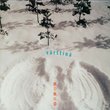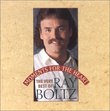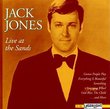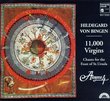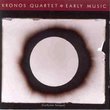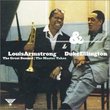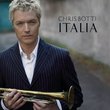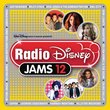| All Artists: Edwards, Sydney Symphony Orchestra Title: Orchestral Works Members Wishing: 0 Total Copies: 0 Label: ABC Classics Release Date: 1/23/1996 Album Type: Import Genre: Classical Styles: Forms & Genres, Concertos, Instruments, Strings, Symphonies Number of Discs: 1 SwapaCD Credits: 1 UPC: 730099700726 |
Search - Edwards, Sydney Symphony Orchestra :: Orchestral Works
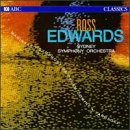 | Edwards, Sydney Symphony Orchestra Orchestral Works Genre: Classical
|
Larger Image |
CD DetailsSimilar CDs
Similarly Requested CDs
|
CD ReviewsOne Antipodal composer new to me; three distinctive works. Bob Zeidler | Charlton, MA United States | 09/07/2003 (5 out of 5 stars) "What does one do when one "runs out of composers" to listen to? (Can this in fact really happen? I tend to doubt it, but I'm always on the lookout for something new and interesting, and finding that too many compositions are "new" without being "interesting.") Well, one thing to do is to listen to the advice of friends. And it was a friend, indeed, who suggested that I listen to this compilation of works by Ross Edwards (b. 1943), an Australian composer having a significant body of work for various media (orchestra, chamber ensemble, opera, ballet and film). Based solely on the three offerings on this ABC (Australian Broadcasting Corporation) release, Edwards has emerged (at least in the Antipodes) as a significant new musical voice in the "neotonal" (neoromantic) mold. This ABC album is as good and as fresh a "debut" CD as I've heard in some years. Edwards's Concerto for Violin and Orchestra, titled "Maninyas," is an appropriately virtuosic solo work that endeavors to incorporate some aspects of "world music" (most notably, to my ears, as from the Indian subcontinent) within the framework of the neoromantic concerto style. The first movement of the work is rather "folkish" in the way the solo part is tossed off. Edwards incorporates an interesting use of world percussion (the Indian tabla, I would expect) partway through the movement, and it takes on a decidedly "Eastern" flavor at this point. The second movement opens, rather unconventionally, with the solo violin cadenza, full of virtuosic effects. Following this long introduction, the strings enter softly with haunting harmonies, and then the violin floats gorgeously over the top of this support, the whole movement simply "opening up" beautifully. The final movement opens with a flourish full of splendid fanfares, first in the horns and then by the trumpets. The movement is full of interesting rhythmic "irregularities" punctuated by world percussion, again as in the first movement. After this exuberent first part of the finale, the work ends softly, with the solo violin fading out at the end. The concerto is a "can't fail" crowd-pleaser, here performed by Dene Olding, for whom Edwards wrote the work. Notwithstanding the incorporation of "world percussion," this solo vehicle is just as accessible (and as enjoyable) as, say, Samuel Barber's concerto for this instrument. The Symphony Da Pacem Domine is an extended (near-30 minute) threnody, or lament, written in memory of Stuart Challender, who had been the Sydney Symphony Orchestra conductor (and conductor of the violin concerto above). It is a beautiful and moving elegy that is built up of minimalistic-type materials. The music alternates, more or less continuously, between dark and somewhat brighter minor modalities, only very rarely breaking through to a major modality, with exquisitely fine dynamic shadings. These shadings, written largely for strings, are occasionally punctuated by more dramatic utterances in the percussion and winds, ultimately, near the end of the work, becoming a spellbinding brass chorale that alternates with rich writing for the strings. The work as a whole is a fine example of "mystical minimalism"; if I were put on the spot to compare it with any existing work for musical parallels, my first choice would likely be Henryk Gorecki's famous "Symphony of Sorrowful Songs" in regard to the effect the work casts on the listener. Others might be reminded of different minimalist composers (Adams, Glass, Pärt, or Tavener), but Gorecki seems to come closest to the mark for me. The final work, "Yarrageh" (Nocturne for Solo Percussion and Orchestra), has its solo part performed by Ian Cleworth, for whom the work was written. (One can readily imagine this work being championed in "our" hemisphere by Evelyn Glennie.) But the work also includes an equally virtuosic piano part, here performed by Anthony Baldwin, who deserves equal billing. It is a challenging work for the two instrumentalists, particularly when the percussionist does his "mallet work" on xylophone, alternating phrases with the pianist. But, ultimately, "Yarrageh" did not engage my interest to the same extent as the other two works on this CD. Edwards, in notes found both in the CD booklet and on his own website, states that he incorporates elements of the "soundfield" of the local environment in this work, but I think that this "capturing of environmental sound" is achieved more successfully by a different Australian composer, Peter Sculthorpe. Still, an interesting and challenging work that is likely to be the favorite among the three for listeners other than myself. Based on this rather small sampling of Edwards's output, his compositions deserve a hearing in our part of the world. If you're looking for a testimonial, I'll simply state that I'd be a willing attendee at a concert that includes either the Violin Concerto or the Symphony Da Pace Domine. Failing that, this album is a worthwhile stopgap, and is highly recommended for those on the lookout for "new stuff from a fresh voice." Bob Zeidler" Da Nobis Pacem is a great work, better than Part or Tavener Bob Zeidler | 05/03/1999 (5 out of 5 stars) "I've had this CD for more than a year. I broadcast classical music on a local radio station, and have had access to most of the music by the "mystical minimalists", e.g. Part, Tavener, etc. The symphony on this CD is better than any of the music by these other composers, maintaining a tension and intensity that is often absent in their works. It is a great work, quite well performed and recorded. The other works are very good, too. They are, however, not similar in style, and use aboriginal themes in a number of places. Hopefully, a success for this disc will lead to (re-)release of other music by this composer, particularly his Piano Concerto, which has an excellent reputation." Fantastic recording quality and wonderful modern music 01/01/1999 (5 out of 5 stars) "This is a kalaidoscopic review of Edwards' music. The Symphony is a long slow lament, wonderfully orchestrated and superbly played by the SSO. The concerto is a vivid dance with a lovely adagio separating the first and last movements. The third piece is "modern music" but eminently listenable and highly recognisable on re-hearing. Sad that this recording is not available as it makes a splendid and unusual gift for the music lover who has heard it all."
|

 Track Listings (5) - Disc #1
Track Listings (5) - Disc #1

